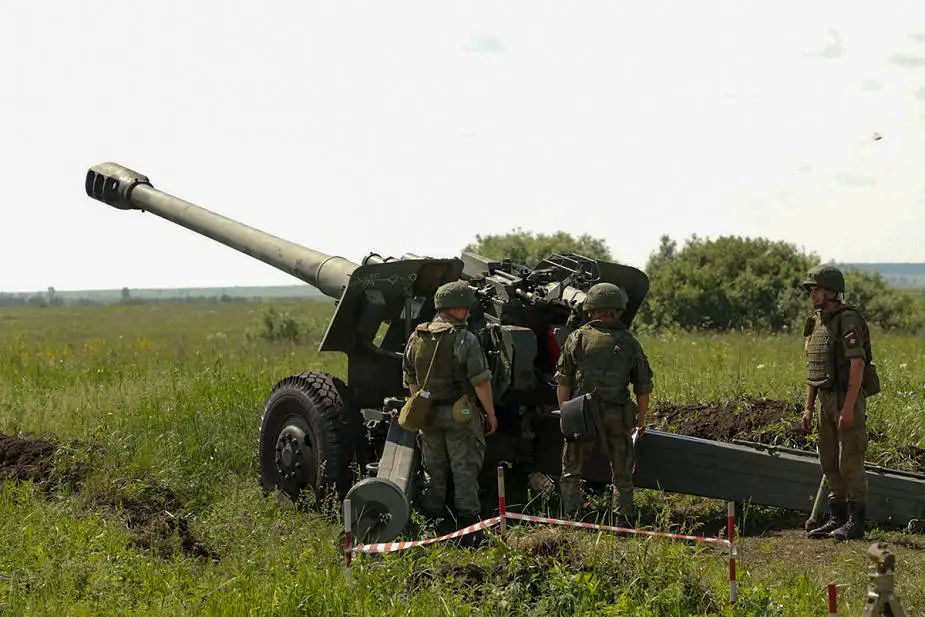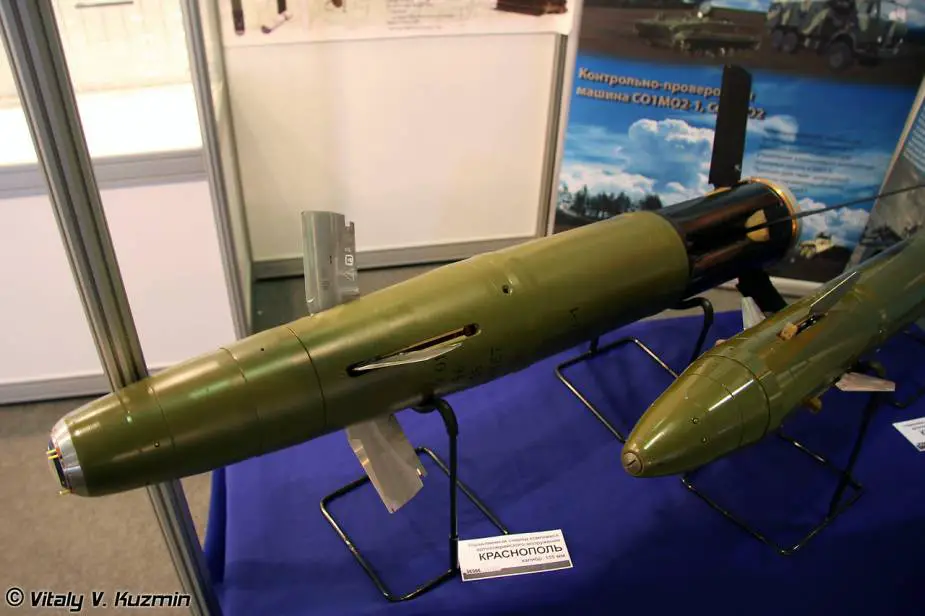- Army
- Conflicts in the world
- Israel - Iran conflict 2025
- Pakistan - India Conflict 2025
- Russia Ukraine War 2022
- Libya conflict day by day
- HAMAS - Israel War 2023
- Operation Serval in Mali French Army
- Sangaris operation Central African Republic
- Sangaris opération militaire République Centreafrique
- Ukraine - Russia conflict
- Syria conflict news
- Defence & Security Industry Technology
- Armies in the world
- Analysis Defense and Security Industry
- Conflicts in the world
- Navy
- Air
Analysis Ukraine: Orlan-30 UAVs boosting precision of Russian Msta-B Howitzer and Krasnopol Munition
In the world of modern warfare, drones have become an essential tool for artillery units to enhance the accuracy of their operations, especially when working with towed howitzers. Russian artillery units deployed in Ukraine use Orlan-30 drones to increase the accuracy of 152-mm howitzer 2A65 "Msta-B" firing high-precision guided ammunition 3OF39 "Krasnopol". Reconnaissance and target designation was provided by the Orlan-30 UAV.
Follow Army Recognition on Google News at this link

Russian artillery units deployed in Ukraine use Orlan-30 drones to increase the accuracy of 152-mm howitzer 2A65 "Msta-B" firing high-precision ammunition 3OF39 "Krasnopol". (Picture source Russian MoD)
The use of drones with artillery units is anchored primarily in their capacity to perform reconnaissance and surveillance tasks. These unmanned aerial vehicles can venture into enemy territory safely, gathering crucial data regarding terrain, enemy formations, structures, and other important elements. This detailed, high-definition information is then relayed back to the artillery units in real time, providing an accurate, up-to-date understanding of the battlefield. By possessing a comprehensive understanding of the environment, artillery units can appropriately position and calibrate their towed howitzers, considering factors such as distance and altitude, to increase their firing accuracy.
Beyond mapping out the battlefield and providing essential data, drones play a direct role in the target acquisition process. These sophisticated devices are designed to identify and mark targets, transmitting precise coordinates back to the artillery units. The identified targets can be marked using a variety of technologies, including GPS coordinates or laser markers, ensuring a high degree of accuracy. This enables artillery units to adjust their towed howitzers appropriately, aiming their fire precisely to engage enemy targets more effectively.
The role of drones isn't limited to just before the firing of artillery; they also have a significant role to play post-firing. They can provide an immediate assessment of the damage, giving critical feedback to the artillery units. This real-time data allows the artillery units to adjust their subsequent fire, if needed, making their operations more efficient and effective.
The 2A65 "Msta-B" is a Soviet-designed towed 152mm howitzer. It was designed in the 1980s and entered service with the Soviet Army in 1987. The "B" in its designation indicates that it is a towed version of the weapon.
The Msta-B is designed to defeat unsheltered and sheltered manpower, weapons, military and special equipment, fortifications, and other targets on the battlefield. The gun can be used in both direct fire (line of sight with the target) and indirect fire (lobbing shells onto targets out of the line of sight) modes.
It's a highly capable weapon with a range of around 24.7 kilometers (or even more with rocket-assisted projectiles) and a firing rate of about 6-8 rounds per minute.
The Msta-B is typically operated by a crew of 8 soldiers. It has a semi-automatic loading system which improves the rate of fire, and its double baffle muzzle brake reduces recoil. A modernized version of the Msta-B is equipped with a GPS navigation system, which improves its mobility, positioning, and targeting accuracy.

The 2A65 "Msta-B" is Russian-made 152mm towed howitzer able to fire guided ammunition. (Picture source Russian MoD)
The 3OF39 Krasnopol is a specialized artillery shell developed by the Soviet Union. Designed to function as part of a semi-automatic artillery fire control system, it possesses a unique combination of capabilities that allow for high precision strikes on both stationary and moving targets.
The core of the Krasnopol system is the shell itself, a laser-guided, fin-stabilized 152mm projectile. This advanced artillery shell has been equipped with a laser sensor in its nose cone, a feature that enables it to detect and home in on laser-designated targets. This means that once the shell is launched and it arrives within the vicinity of its target, it can guide itself onto the laser mark. This capability enhances the precision of the shell, thereby increasing the likelihood of striking the intended target. With a range extending up to 20 kilometers (depending on the variant and conditions), the Krasnopol shell adds a significant long-range capability to artillery units.
Yet, the Krasnopol shell is just one part of a broader system. A laser designator and a forward observer play crucial roles in the operation of the Krasnopol system. The forward observer is responsible for identifying targets and guiding the shell towards them. This is achieved through the use of a laser designator, a device that 'paints' a target with laser light. The Krasnopol shell, with its laser sensor, can then detect this 'painting' and follow the path to its target.
In conclusion, the integration of drones in artillery operations greatly enhances the accuracy and efficiency of artillery fire. By providing detailed reconnaissance, precise target acquisition, and immediate damage assessment, drones allow artillery units to optimize the positioning, calibration, and effectiveness of their towed howitzers.

The 3OF39 Krasnopol is a 152/155 mm cannon-launched, fin-stabilized, base bleed-assisted, semi-automatic laser-guided artillery ammunition which has a maximum firing range of 20 km. (Picture source Vitaly Kuzmin)


























